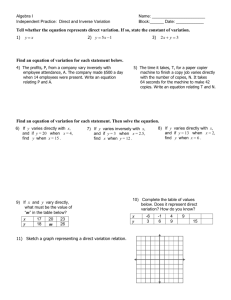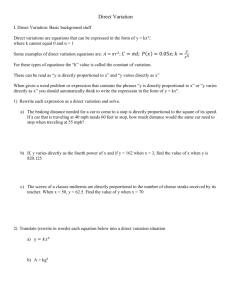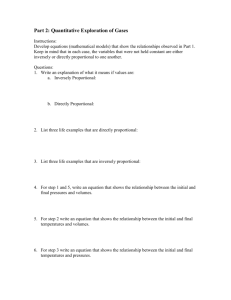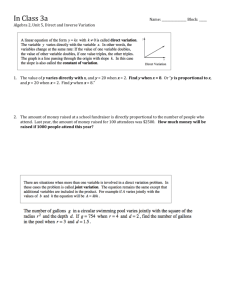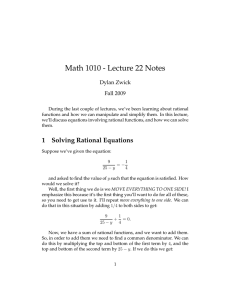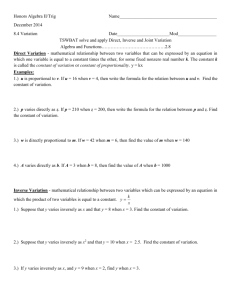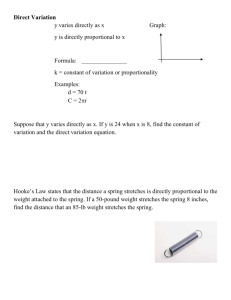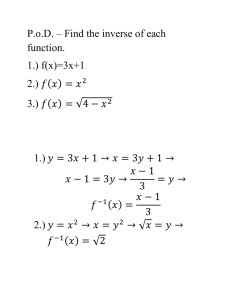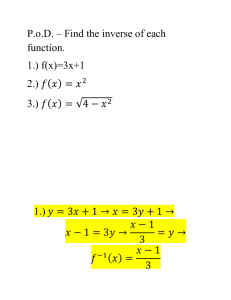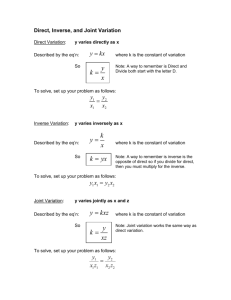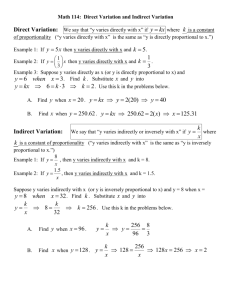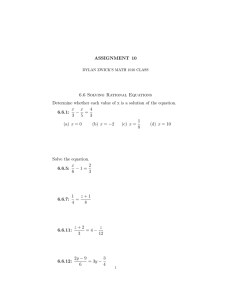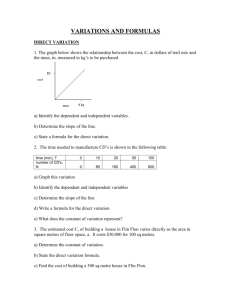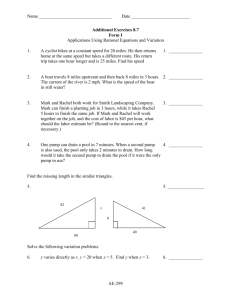Lecture Notes for Section 7.8 (Variation)
advertisement
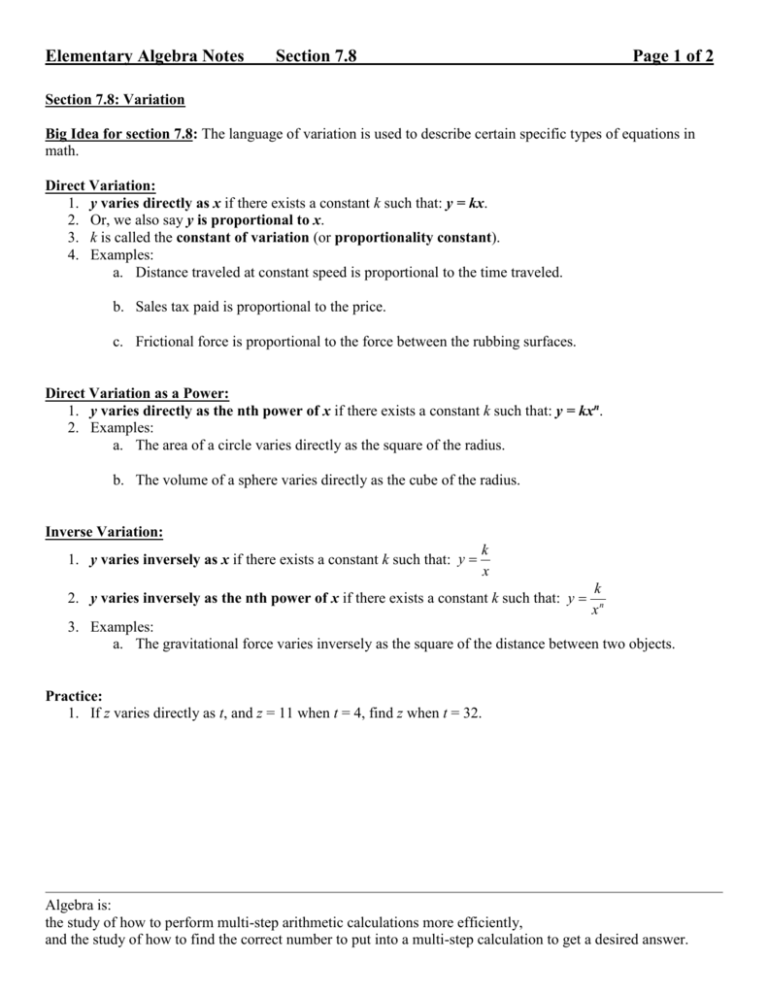
Elementary Algebra Notes Section 7.8 Page 1 of 2 Section 7.8: Variation Big Idea for section 7.8: The language of variation is used to describe certain specific types of equations in math. Direct Variation: 1. y varies directly as x if there exists a constant k such that: y = kx. 2. Or, we also say y is proportional to x. 3. k is called the constant of variation (or proportionality constant). 4. Examples: a. Distance traveled at constant speed is proportional to the time traveled. b. Sales tax paid is proportional to the price. c. Frictional force is proportional to the force between the rubbing surfaces. Direct Variation as a Power: 1. y varies directly as the nth power of x if there exists a constant k such that: y = kxn. 2. Examples: a. The area of a circle varies directly as the square of the radius. b. The volume of a sphere varies directly as the cube of the radius. Inverse Variation: 1. y varies inversely as x if there exists a constant k such that: y k x 2. y varies inversely as the nth power of x if there exists a constant k such that: y k xn 3. Examples: a. The gravitational force varies inversely as the square of the distance between two objects. Practice: 1. If z varies directly as t, and z = 11 when t = 4, find z when t = 32. Algebra is: the study of how to perform multi-step arithmetic calculations more efficiently, and the study of how to find the correct number to put into a multi-step calculation to get a desired answer. Elementary Algebra Notes Section 7.8 Page 2 of 2 2. The distance an object falls is directly proportional to the square of the time it spends falling. If an object falls 144 feet after 3 seconds, how far will it have fallen after 10 seconds? 3. The pressure of a gas is inversely proportional to its volume. If a gas has a pressure of 1 atmosphere when it is confined to a volume of 22.4 liters, what is its pressure when it is confined to 15 liters? 4. The gravitational force is inversely proportional to the square of the distance between the center of two objects. If a person weighs 200 pounds on the surface of the earth (when s/he is 3950 miles above the center of the earth), what is that person’s weight when s/he is 1,000 miles above the surface of the earth? Algebra is: the study of how to perform multi-step arithmetic calculations more efficiently, and the study of how to find the correct number to put into a multi-step calculation to get a desired answer.
